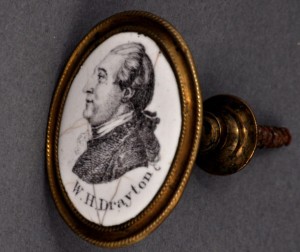Voted the Best Place to See by Condé Nast Traveler.

If Charles Pinckney (1751-1824)—Continental Congressman, signer of the U.S. Constitution, Governor of South Carolina, and minister to Spain—is considered to be a “forgotten founder” by historians, then so to is William Henry Drayton (1742-1779).
But, it is William Henry Drayton—Chief Justice of South Carolina, Continental Congressman, and signer of the Articles of Confederation (1778)—that perpetuated what has become the time-honored tradition of celebrating the establishment of our nation with a “grand fireworks” display on the “glorious anniversary” of Independence.
Although not the first pyrotechnic exhibition, Drayton felt it essential to carry on with commemoration of the signing in 1779, even if the day fell on a sacred Sunday or in the midst of the yet uncertainty and casualties. He believed it would be “calculated for improving bodily strength—to make Men athletic & robust,” a moral boost for a weary nation and so it was!
Unfortunately, William Henry only lived a few months after his arguments for continuing commemoration in the Continental Congress. His death at the age of thirty-seven in September of 1779 ended the trajectory of this young founding father, but his contribution, although brief, laid another course in the foundation of the United States of America.
If you are interested to learn more about William Henry Drayton, please read Keith Krawczynski’s William Henry Drayton: South Carolina’s Revolutionary Patriot.
What is it? William Henry Drayton Mirror Knob

Late 18th century mirror knob. Copper alloy, enamel, and iron. Gift of Mr. John Mayer. Photographed by Russell Buskirk.
This unique object from the Drayton Hall Museum Collection illustrates the popularity of Revolutionary War patriot William Henry Drayton. While research on this item is ongoing, this object is thought to be a mirror knob used to help support the frame of a mirror to the wall; an explanation of mirror knobs can be found in the 1904-1905 edition of House Beautiful. Other potential terms for this item include cloak pin or curtain pin. Whatever its use, the bust of W.H. Drayton is depicted in black on white enamel. Copper alloy with dot decoration serves to frame the ‘miniature,’ the reverse is brass with a threaded iron shaft. The image is taken from the Benoît Louis Prévost engravings of Pierre Eugène Du Simitière’s c.1777 portraits of American patriots which included William Henry Drayton. It is important to note that Du Simitière is also the artist that painted the 1765 watercolor depicting Drayton Hall.